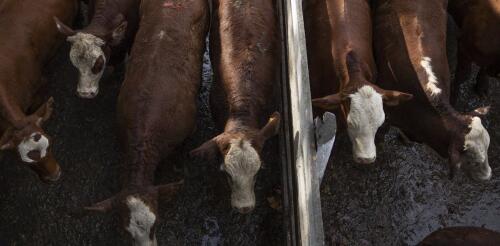Cattle
In Argentina, where beef is a symbol of national pride, a government-led partnership has started certifying certain livestock as carbon neutral. It’s a big step that shouldn’t be underestimated, but getting the certification process right is crucial. The world’s livestock sector is a key driver of climate change, contributing around 12% of global greenhouse gas emissions. Two-thirds of agriculture’s annual greenhouse gas emissions come from livestock, with raising cattle for meat typically being the most emissions-intensive activity. While shifting diets to plant-based foods and alternative proteins can help reduce emissions, global meat consumption is growing with an expanding population and rising prosperity. There are ways that livestock producers can reduce those emissions. However, beyond social pressure, ranchers have few incentives to do so. Unless those steps to reduce emissions also increase productivity, they typically become costs with little...
Strong winds spread the largest wildfire in Texas history across more than 1 million acres of rangeland in the Panhandle, the heart of the state’s cattle-producing region, and into Oklahoma in late February 2024. Light precipitation on Feb. 29 helped firefighters as they tried to contain the Smokehouse Creek Fire and other blazes threatening homes and livestock, but the heat and winds picked up again on March 2. At least two people died and scores of structures, including homes, burned. Karen Hickman, a grassland ecologist at Oklahoma State University and president of the Society for Range Management, explained why the fires spread so fast, the risks to livestock and how quickly these ecosystems can recover. How did the fires spread so far so quickly? This region of Texas and Oklahoma is mostly rangeland where cattle graze. A combination of higher-than-average temperatures and low humidity had dried out the dormant plants. When the winds picked up following a couple of ho...
For the first time ever, food and agriculture took center stage at the annual United Nations climate conference in 2023. More than 150 countries signed a declaration, committing to make their food systems – everything from production to consumption – a focal point in national strategies to address climate change. While the declaration is thin on concrete actions to adapt to climate change and reduce emissions, it draws attention to a crucial issue. The global food supply is increasingly facing disruptions from extreme heat and storms. It is also a major contributor to climate change, responsible for one-third of all greenhouse gas emissions from human activities. This tension is why agriculture innovation is increasingly being elevated in international climate discussions. Farmers work in a field during monsoon rains in Madhya Pradesh, India. Rajarshi Mitra via Flickr, CC BY-ND At presen...
Flash droughts develop fast, and when they hit at the wrong time, they can devastate a region’s agriculture. They’re also becoming increasingly common as the planet warms. In a new study published May 25, 2023, we found that the risk of flash droughts, which can develop in the span of a few weeks, is on pace to rise in every major agriculture region around the world in the coming decades. In North America and Europe, cropland that had a 32% annual chance of a flash drought a few years ago could have as much as a 53% annual chance of a flash drought by the final decades of this century. The result would put food production, energy and water supplies under increasing pressure. The cost of damage will also rise. A flash drought in the Dakotas and Montana in 2017 caused US$2.6 billion in agricultural damage in the U.S. alone. Stunted corn in Nebraska struggles to grow during the 2012 flash drought that covered much of the cent...



